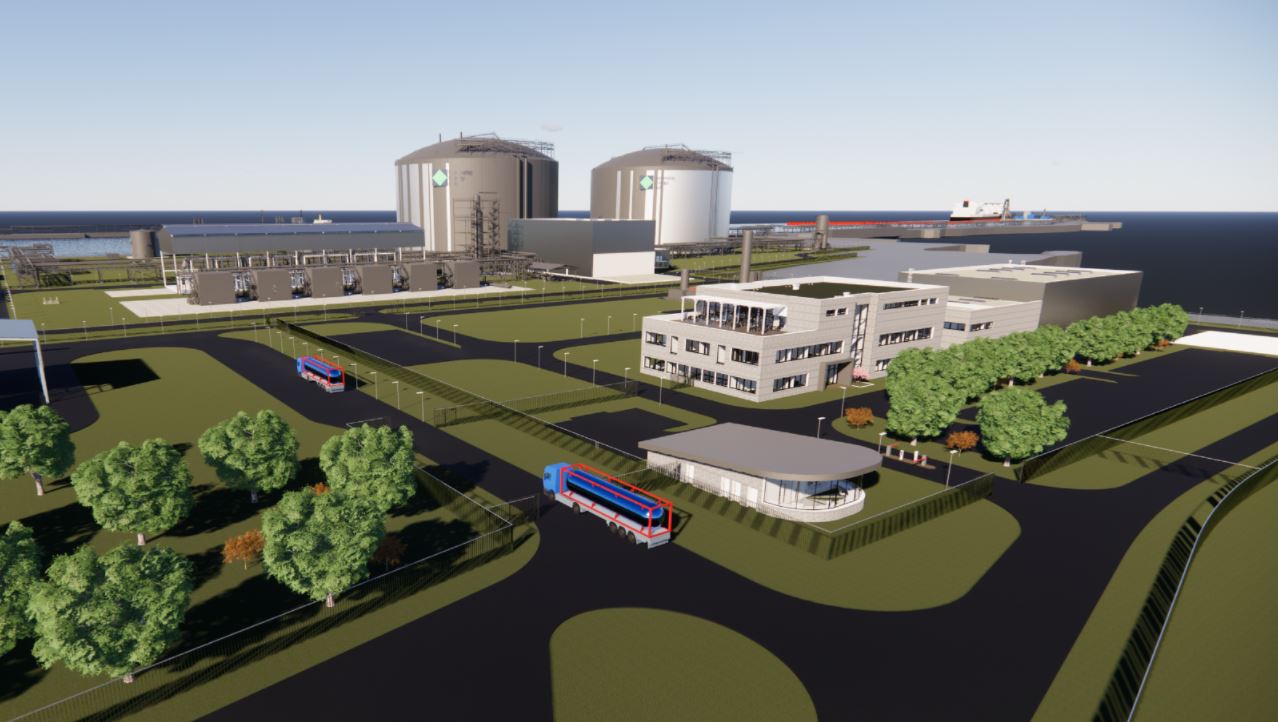Germany’s Hanseatic Energy Hub, developer of the Stade LNG import terminal near Hamburg, is inviting international market participants to submit binding capacity bids for the facility.
Ealrier this year, HEH said market players had shown “great interest” to book capacity at the facility and announced it would launch the binding open season “as early as summer”.
Following the “very positive” reactions in the market to the non-binding expression of interest process in April, the consortium around Fluxys, Dow, Partners Group, and Buss Group is the first LNG project in Germany to invite international market participants to submit binding bids for terminal capacities from June 16 to July 29, HEH said on Thursday.
The total capacity of the terminal is 13.3 billion cubic meters of natural gas per year with a send-out capacity of 21.7 GWh/h.
This corresponds to about 15 percent of Germany’s gas demand, according to HEH.
For long-term marketing, HEH offered 12 bcm per year.
The LNG terminal developer noted that Germany’s Federal Network Agency or the Bundesnetzagentur recently decided to lower the feed-in tariffs at LNG terminals by 40 percent.
HEH said this would significantly improve the competitiveness of direct access into the unified German gas market hub THE.
“Another key milestone”
With the binding open season, HEH reaches “another key milestone” after the submission of the approval documents for the terminal and port and enters a new project phase, it said.
Now that the main technical and commercial course has been set, the focus in future will be more on the operational development of the terminal including construction and preparations for operation.
For this purpose, Fluxys would strengthen the HEH team with additional operational know-how, the firm said.
“In recent weeks, numerous new LNG supply deals have been signed in the market. With the binding open season, we are offering binding regasification options so that LNG volumes can actually reach the German market,” Johann Killinger, managing director and one of the shareholders of HEH said.
“In Stade, we are ready to strengthen the German energy supply with a future-flexible terminal from 2026 onwards,” Killinger said.
HEH’s terminal would initially receive LNG and low-carbon energy sources such as bio-LNG and synthetic methane.
As global supply grows, it would later be available to import hydrogen-based energy sources, such as ammonia, HEH said.
Germany to become big LNG importer
Germany currently has no LNG import facilities but it has chartered four FSRUs to start importing LNG.
These include the two units RWE chartered from Hoegh LNG, and the Dynagas-owned 174,000-cbm Transgas Force and Transgas Power that will go on charter to Uniper.
Uniper also started building the first German import terminal in Wilhelmshaven and this facility will host one of the chartered FSRUs.
Besides these units, German energy firm E.ON recently told LNG Prime that it had joined forces with Belgium-based Tree Energy Solutions (TES) and France’s Engie to deploy another FSRU in Wilhelmshaven.
Uniper previously said that the two Dynagas units would have up to 15 bcm per year of capacity, while RWE said the Hoegh FSRUs would have between 10 and 14 bcm per year.
Depending on the capacity of the fifth unit, Germany could have over 30 bcm per year of regasification capacity coming from five FSRUs in 2023.

